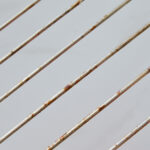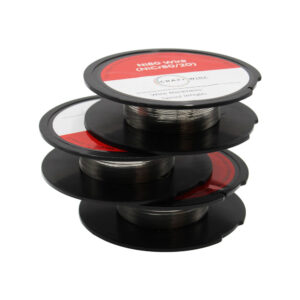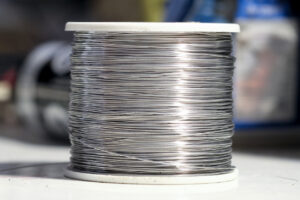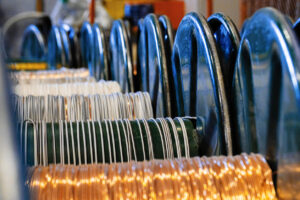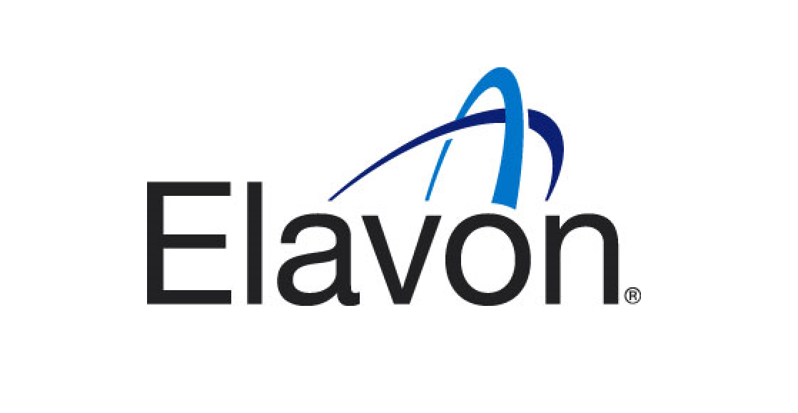In the world of craftsmanship, materials are more than just the mediums through which ideas take shape – they are the vital essence that bridges creative vision and reality. Among these materials, soft wire emerges as a remarkable element, beloved and widely used by artisans across various domains. Soft wire, distinguished by its malleability and pliability, stands in contrast to its sturdier counterpart, hard wire. This unique flexibility not only allows for easier manipulation but also opens a gateway to an array of artistic possibilities.
The popularity of soft wire spans a diverse range of crafts. From the delicate curves of jewelry pieces to the bold twists in sculptural works, soft wire is a testament to its versatile nature. It’s not just in traditional crafts that soft wire has found its footing; in modern applications like electronics, its role is equally indispensable, thanks to its excellent conductivity and bendability. This widespread use is rooted in a fundamental advantage: soft wire, through its easy-to-shape character, fosters creativity and innovation in craftsmanship.
Therefore, the core of this exploration is to understand why soft wire is not just a material of choice but a preferred ally for craftsmen. Its advantages lie not just in its physical properties but also in how it empowers artisans to push the boundaries of their creative realms.
Understanding Soft Wire
Soft wire is characterized by its malleability and ductility – qualities that allow it to be easily bent, twisted, and shaped without breaking. This type of wire is typically made from metals that inherently possess these properties, such as copper and aluminum. Copper, known for its excellent conductivity and flexibility, is a staple in both artistic and technical fields. Aluminum, lighter yet durable, presents itself as an ideal option for projects where weight is a concern.
The defining difference between soft wire and hard wire lies in their respective flexibility and strength. While hard wire maintains rigidity and is more resistant to deformation, soft wire offers the opposite – a forgiving nature that accommodates intricate designs and complex bends. This distinction makes soft wire particularly suited for tasks where precision and delicacy are paramount.
In terms of strength, soft wire, though seemingly less robust than hard wire, can be surprisingly resilient. Its ability to absorb and distribute stress without fracturing makes it a reliable choice for various applications. Additionally, the surface of soft wire can be treated or coated to enhance its properties, such as increasing resistance to corrosion or adding aesthetic value.
Versatility in Applications
The versatility of soft wire in various applications is a testament to its adaptability and functionality across different crafting domains. This flexibility has made it a material of choice in fields as diverse as jewelry making, sculpture, electronics, and other decorative crafts.
Jewelry Making: In the realm of jewelry making, soft wire stands out for its ease of shaping and molding. Jewelers value soft wire for its ability to be bent into complex, intricate designs without breaking. Whether it’s forming delicate loops for earrings, creating intricate wire-wrapped pendants, or fashioning clasps and chains, soft wire provides a blend of strength and malleability. This versatility allows jewelers to explore creative designs that would be unfeasible with harder, less pliable materials.
Sculpture and Art: Artists and sculptors find soft wire invaluable for its capacity to realize intricate and detailed artwork. Its pliability enables the creation of complex, three-dimensional shapes, ranging from lifelike figures to abstract forms. Soft wire can be twisted and contorted into detailed sculptures that capture the fluidity and dynamism of the artist’s vision. Moreover, the ability to combine soft wire with other materials such as clay, glass, or fabric opens up a wide spectrum of artistic possibilities.
Electronics and Electrical Projects: In the world of electronics and electrical projects, the flexibility and conductivity of soft wire are crucial. It is extensively used in creating circuits, wiring electronic components, and prototyping. The flexibility of soft wire is a boon for maneuvering through tight spaces in electronic devices, while its good conductivity ensures efficient electrical connections. The ease of soldering soft wire also makes it a preferred choice in the intricate work of circuit board assembly and repairs.
Other Crafts: Beyond these fields, soft wire finds its place in a myriad of other crafts. In beading, it enables the creation of custom shapes and frames to hold beads. Floral arrangements often use soft wire for its ability to hold flowers and foliage in place while being discreet and aesthetically pleasing. Hobbyists and crafters also use soft wire in making decorative items, home decor, and even in textile arts for creating embellishments and accessories.
The common thread in all these applications is the unparalleled combination of flexibility, strength, and ease of use that soft wire offers. Whether it’s in creating delicate jewelry, sculpting expressive artworks, wiring intricate electronic circuits, or crafting decorative pieces, soft wire’s adaptability makes it an invaluable material in the craftsman’s arsenal. This versatility not only caters to functional needs but also inspires innovation and creativity in various artistic disciplines.
User-Friendly for Craftsmen
The user-friendliness of soft wire is a key factor in its widespread adoption by craftsmen of all skill levels. Its ease of manipulation is a significant advantage, requiring less force and fewer specialized tools compared to harder wire types. This accessibility makes soft wire especially appealing to beginners who may not have advanced tools or techniques at their disposal. At the same time, experienced craftsmen appreciate the reduced physical strain and increased efficiency when working with soft wire.
One of the most notable benefits of soft wire is the reduced risk of injury. Hard wire, due to its rigidity, can snap or create sharp ends, posing a risk of cuts or punctures. Soft wire, on the other hand, bends smoothly and is less likely to break suddenly, thereby minimizing the likelihood of such accidents. This safety aspect is particularly important in educational settings or workshops where safety is a primary concern.
Soft wire’s versatility extends across experience levels. Beginners find it forgiving, allowing them to experiment and learn without the frustration of dealing with a rigid, unforgiving material. For the experienced artisan, soft wire offers the opportunity to delve into more complex, intricate designs that demand a high level of precision and control. Its adaptability challenges the skills of seasoned craftsmen while still being approachable for those just starting.
Durability and Aesthetic Appeal
Despite its flexibility, soft wire does not compromise on durability. Its resistance to wear and tear makes it suitable for a variety of applications, ranging from jewelry that withstands daily wear to sculptures that maintain their integrity over time. This longevity is a crucial aspect for craftsmen who want their creations to last and maintain their beauty for years to come.
The aesthetic versatility of soft wire adds another layer to its appeal. It can be polished to a high shine, colored through various methods, or textured to create unique visual effects. This flexibility allows craftsmen to achieve a wide range of artistic styles and cater to diverse tastes and trends.
Case studies and examples of crafts made with soft wire further illustrate its durability and aesthetic appeal. For instance, wire-wrapped jewelry pieces are not only visually stunning but are also known to retain their shape and beauty over extended periods. Sculptures made with soft wire can withstand environmental factors when displayed outdoors, showcasing the material’s resilience. These examples highlight how soft wire serves not just as a medium for creation but also as a guarantee of enduring beauty and lasting craftsmanship.
Environmental and Economic Benefits
Soft wire also stands out for its environmental and economic benefits, factors increasingly important in our sustainability-conscious world. A significant aspect of this is the recyclability of materials commonly used in soft wire, such as copper and aluminum. These materials can be reused and recycled multiple times without losing their essential properties, reducing the environmental impact associated with waste. This recyclability not only contributes to environmental sustainability but also ensures a steady supply of materials, crucial in maintaining a balance between demand and ecological responsibility.
From an economic perspective, soft wire is often more cost-effective compared to other materials used in similar applications. When compared with materials that require complex processing or are difficult to source, soft wire is relatively inexpensive and readily available. This affordability makes it an attractive option for craftsmen, particularly those just starting or operating on a tight budget.
Moreover, the use of soft wire encourages local craftsmanship and the growth of small-scale industries. As a material that is easy to work with and requires minimal specialized equipment, soft wire enables local artisans and small businesses to produce high-quality, handcrafted items. This not only fosters local economies but also helps in preserving traditional crafting techniques, contributing to the cultural richness of communities.
In conclusion, the advantages of soft wire in the world of crafts are manifold. Its flexibility and ease of use make it ideal for a wide range of applications, from intricate jewelry making to detailed sculptures and practical electronics projects. For craftsmen, whether beginners or experienced, soft wire offers a balance of user-friendliness and creative potential, allowing them to explore and express their artistic visions with fewer limitations.
Beyond its functional and aesthetic benefits, soft wire also aligns with contemporary concerns of sustainability and economic viability. Its recyclability underscores a commitment to environmental responsibility, while its cost-effectiveness and support for local craftsmanship contribute to economic sustainability.
This comprehensive exploration of soft wire’s benefits invites readers to consider its potential in their own crafting projects. Whether you are a seasoned artisan or a curious beginner, experimenting with soft wire could open new avenues of creativity and innovation. Embracing this versatile material not only enriches your craft but also connects you to a broader narrative of sustainable and impactful artistry.
We offer also a massive range of stainless steel wire and nichrome wire through our store. Choose the wire that you want to work with and we’ll get spooling.
If you’re interested in learning more about wire, check out our other blog on Everything You Need to Know About Wires.
We are also proud to supply this product on our highly popular eBay store, check us out there too.
Thank you for checking out our site.
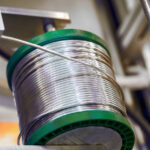
Nichrome Wire Safety: Top Tips for Working Safely
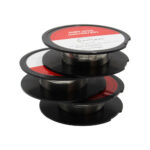
Best Wire for Electronics Projects
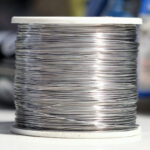
Is Ni80 Wire Suitable for DIY Heating Elements

Wire Grades Explained
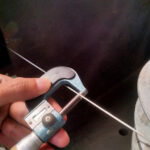
How Wire Diameter Affects Strength and Flexibility
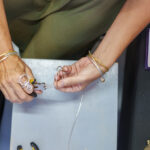
How to Cut and Shape Wire for Custom Applications

Can Wire Be Used in 3D Printing?
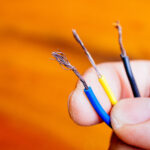
How Wire Composition Affects Conductivity
